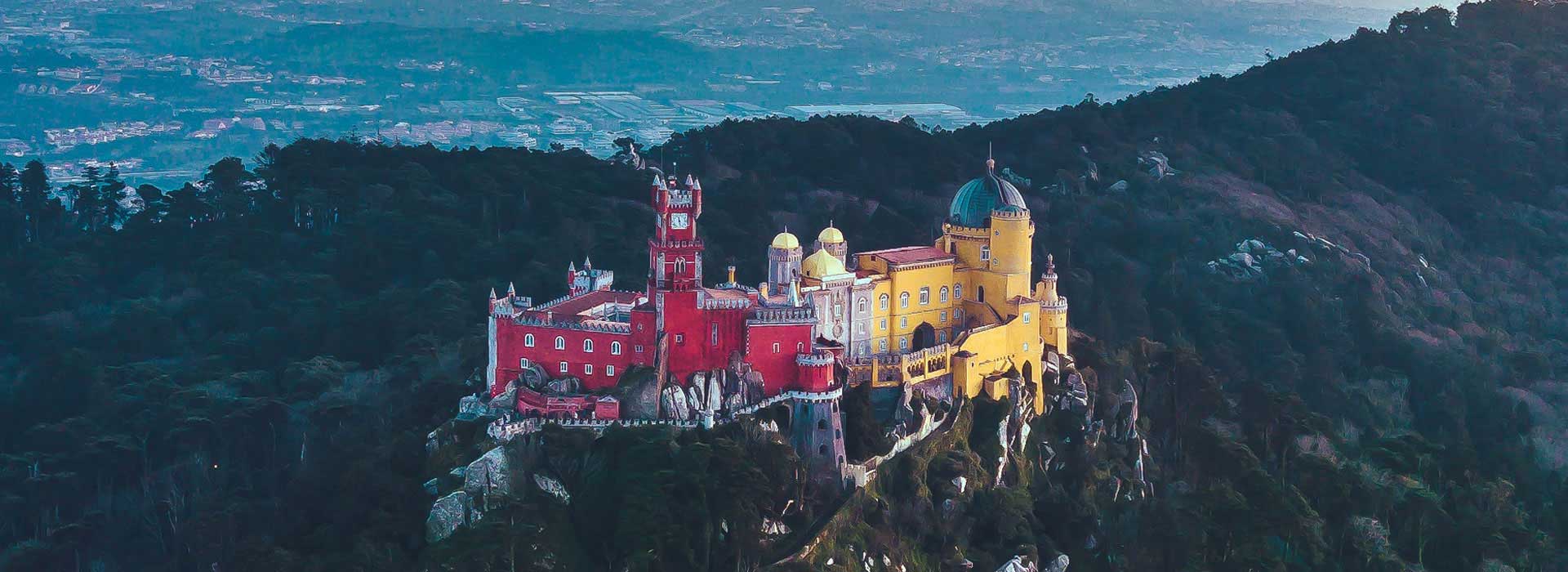
Explore the breathtaking Pena Palace, a must-visit landmark near Lisbon, with MADABOUTSINTRA.COM as your go-to guide. Situated below the summit of Sintra mountain, this iconic palace boasts an impressive design in every aspect. Discover the seamless journey to Pena Palace by opting for the convenient hop-on/hop-off service of bus #434, operating in a circular route from Sintra train station. Enhance your experience by saving both time and money with the purchase of a Skip-the-Line e-ticket prior to your visit. Uncover the wonders of Pena Palace with our comprehensive guide for an unforgettable adventure.

With this entrance ticket you can gain entry to the Pena Palace (Palácio da Pena) at your leisure. Buy online before you arrive to avoid queues and have the convenience of the e-ticket on your phone…
Book with confidence with the FREE CANCELLATION option.
• Kids under Five get in free, no ticket required
• If your plans change we have you covered with the option to cancel and get a full refund
Park, Daily: 09h00 – 19h00, (last admission 19h00)
Palace, Daily: 09h30 - 18h30, (last admission at 18h30)
![]() Lisbon Card: 10% discount
Lisbon Card: 10% discount
Contact Details
Estrada da Pena, Sintra 2710-609, Portugal.
38° 47' 16"N | 09° 23' 15"W | +351 219 237 300
info@parquesdesintra.pt | Website

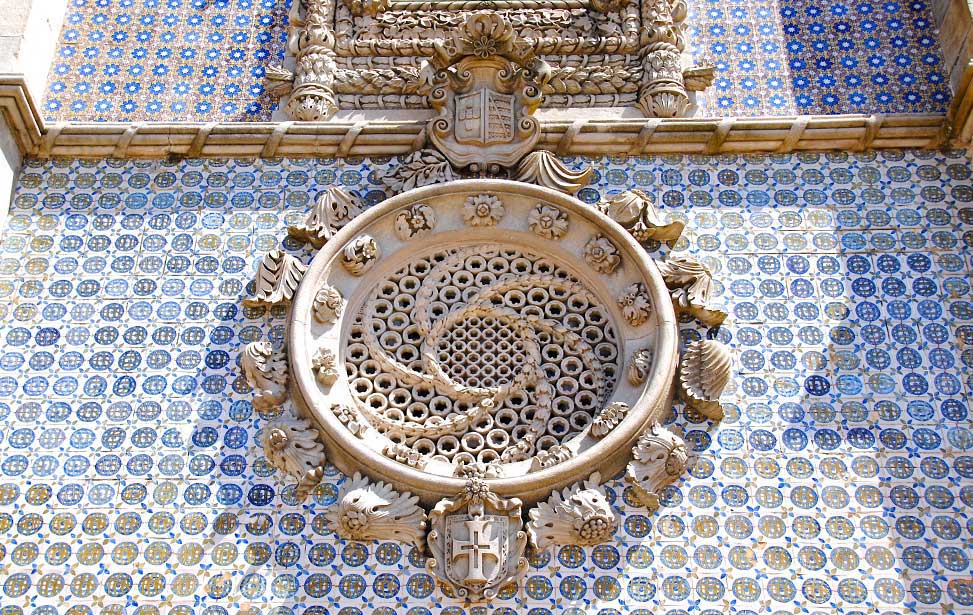
Pena Palace rosette window
Explore the rich history of Pena Palace, whose oldest parts trace back to a 12th-century chapel dedicated to the Virgin Mary. Originally a pilgrimage site and a Monastery for the Order of Saint Jerome with 18 monks, the chapel gained renown for surviving natural disasters like earthquakes and lightning strikes. However, in 1834, Portugal's religious orders were dissolved, marking the end of Pena's monastic era.
In the 19th century, inspired by tales of miraculous events on Sintra mountain, German prince Ferdinand, the King consort of Portugal, embarked on a romantic venture. Fueled by the Romanticism movement sweeping through Europe, Ferdinand envisioned a fairy-tale castle reminiscent of Bavaria's mock-medieval structures, including Schloss Neuschwanstein. In 1838, Ferdinand acquired the Monastery with the ambitious plan to transform it into his royal residence and a dreamlike castle.
Extensive restoration efforts focused on the cloisters, outbuildings, chapel, sacristy, and living quarters, blending newer extensions in Manueline, Gothic, and Arabesque styles. This eclectic mix reflected the Romanticism movement's penchant for pre-classicism and mysticism, resulting in Pena Palace's distinctive features—vividly painted terraces, domes, towers, decorative battlements, a static drawbridge, and mythological statues.
Designed to be visible from any point in the surrounding park, Pena Palace is surrounded by the vast Pena Park (Parque da Pena). The park boasts landscaped areas with exotic trees, mysterious follies, lakes, and mythological statues. Recognised as one of the Seven Wonders of Portugal on July 7, 2007, Pena Palace invites you to uncover its enchanting history and architectural marvels.
Save even more money with these popular combination tickets. Book with confidence with the FREE CANCELLATION option.
When you opt for the ScottUrb #434 bus to reach Pena Palace, your adventure begins at the entrance to the grounds, where the former gatehouse serves as the ticket office. Choose between two ticket options: Palace & Park or Park only. For a seamless experience, display your skip-the-line e-ticket on your mobile phone to the staff. Access Pena Palace by taking a brief uphill walk through the park or utilising the electric mini-bus service. To enter the Palace complex, pass through the Arabesque Arch known as the Door of Alhambra, inspired by the Door of Justice in Granada, Spain. Adorned with Islamic styles and ornate tiles, this arch features distinctive crocodile-shaped gargoyles on the cornerstones.
Upon passing through the Door of Alhambra, you'll find yourself on the Coach House Terrace. Here, you'll encounter the Monumental Gate, a fusion of various styles with a somewhat whimsically fortified portal. The diamond spikes on the gate bring to mind the Casa dos Bicos in Lisbon. The gatehouse, complete with decorative cylindrical bartizans and cupolas, guards the top corners. A rounded archway, adorned with dotted ropework and serpents, leads you over a faux drawbridge into the entrance tunnel, guiding you towards the residential wings beyond.When you opt for the ScottUrb #434 bus to reach Pena Palace, your adventure begins at the entrance to the grounds, where the former gatehouse serves as the ticket office. Choose between two ticket options: Palace & Park or Park only. For a seamless experience, display your skip-the-line e-ticket on your mobile phone to the staff. Access Pena Palace by taking a brief uphill walk through the park or utilising the electric mini-bus service. To enter the Palace complex, pass through the Arabesque Arch known as the Door of Alhambra, inspired by the Door of Justice in Granada, Spain. Adorned with Islamic styles and ornate tiles, this arch features distinctive crocodile-shaped gargoyles on the cornerstones.
Upon passing through the Door of Alhambra, you'll find yourself on the Coach House Terrace. Here, you'll encounter the Monumental Gate, a fusion of various styles with a somewhat whimsically fortified portal. The diamond spikes on the gate bring to mind the Casa dos Bicos in Lisbon. The gatehouse, complete with decorative cylindrical bartizans and cupolas, guards the top corners. A rounded archway, adorned with dotted ropework and serpents, leads you over a faux drawbridge into the entrance tunnel, guiding you towards the residential wings beyond.
The tunnel opens into the Terrace of the Triton, granting access to both the original monastery wing and the newer palace constructions. Named after the elaborate gateway protected by two domed towers, this terrace features a half-man, half-fish creature known as the Triton. Suspended from a window ledge inside a giant oyster shell, the Triton's hair transforms into vine decoration framing the window. The "Allegoric Gate to the Creation of the World" depicts the Triton as an allegory of the four elements: earth, fire, water, and air. Inspired by Damião de Góis' writing in 1554, the Triton is believed to have been observed singing on a beach west of Sintra whilst sitting on a shell.
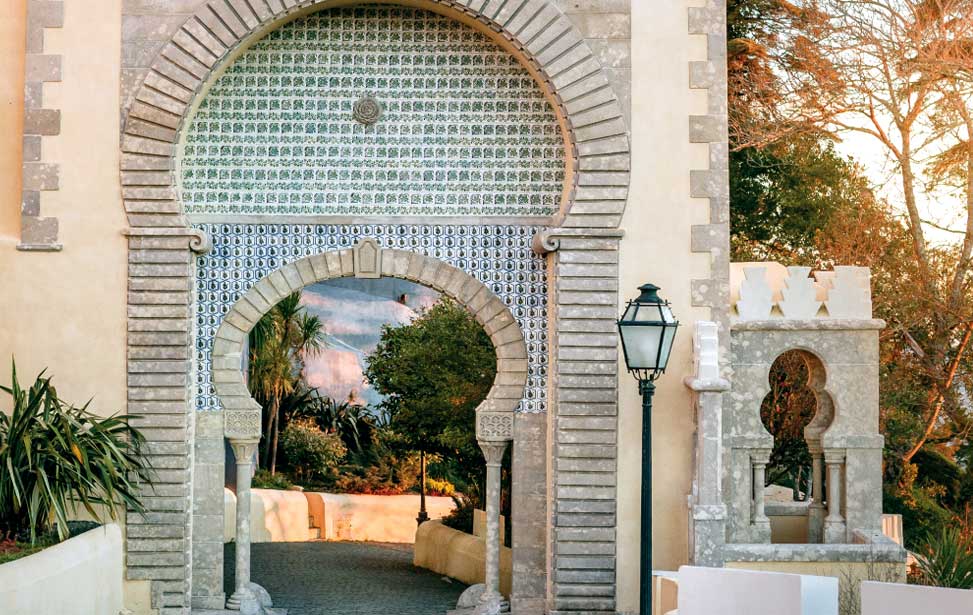
Door of Alhambra (or of The Rose)
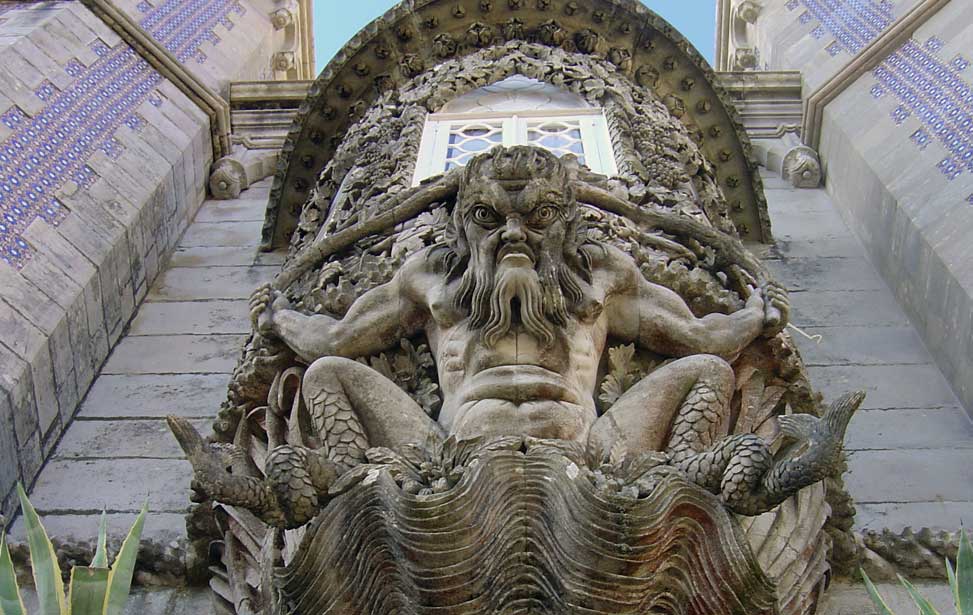
Terrace of the Triton
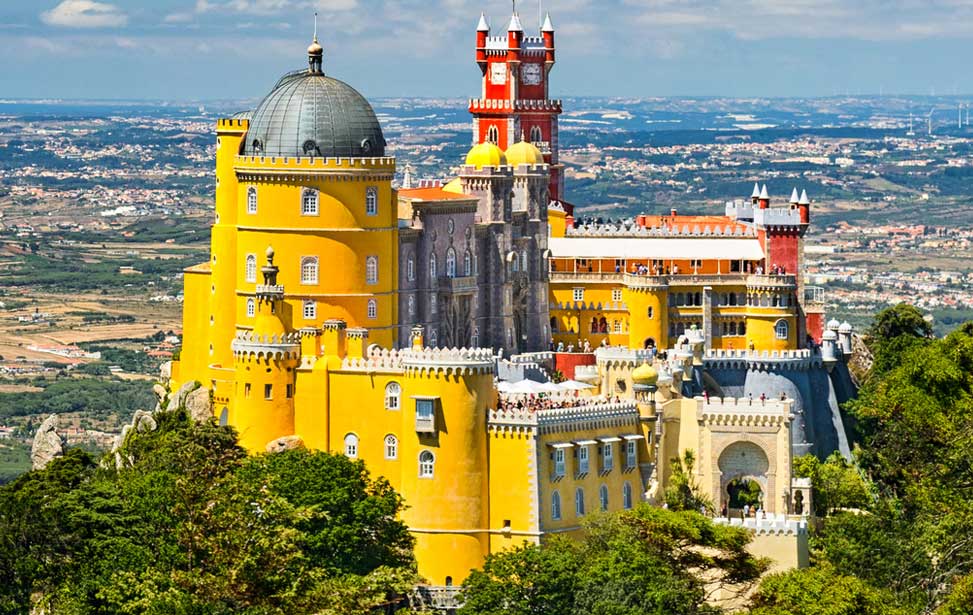
This comprehensive full-day tour from Lisbon gives you the chance to visit one of Europe’s most beautiful romantic palaces. Avoid the stress of making your own way to the widely dispersed highlights of Sintra and Cascais by travelling around the province with ease. Marvel at the UNESCO-listed Pena National Palace; visit Cabo da Roca, Europe’s westernmost point; and discover the charming fishing village of Cascais. Hotel pickup and drop-off are included.
Check Availability
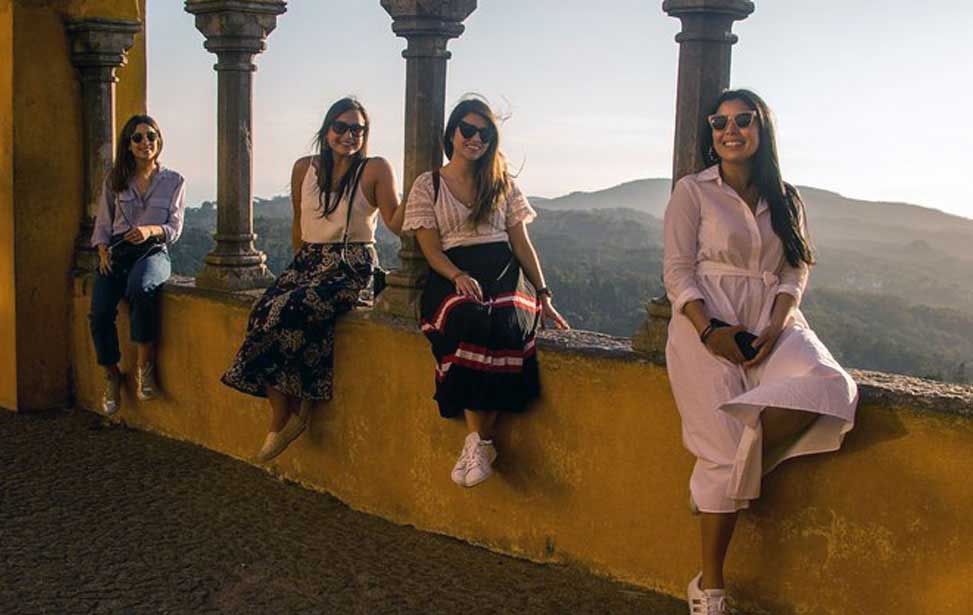
The tour will be a day trip where travellers can enjoy the different faces of Sintra. From the historic centre and the marvellous monuments to the coastline, where small villages are nestled between the rocks and the sea. The itinerary is designed in a way guests can visit the most popular spots. Discover the hidden treasures only the locals know of and taste the fantastic Portuguese cuisine. We will avoid crowds and your tour is 100% customisable.
Check Availability
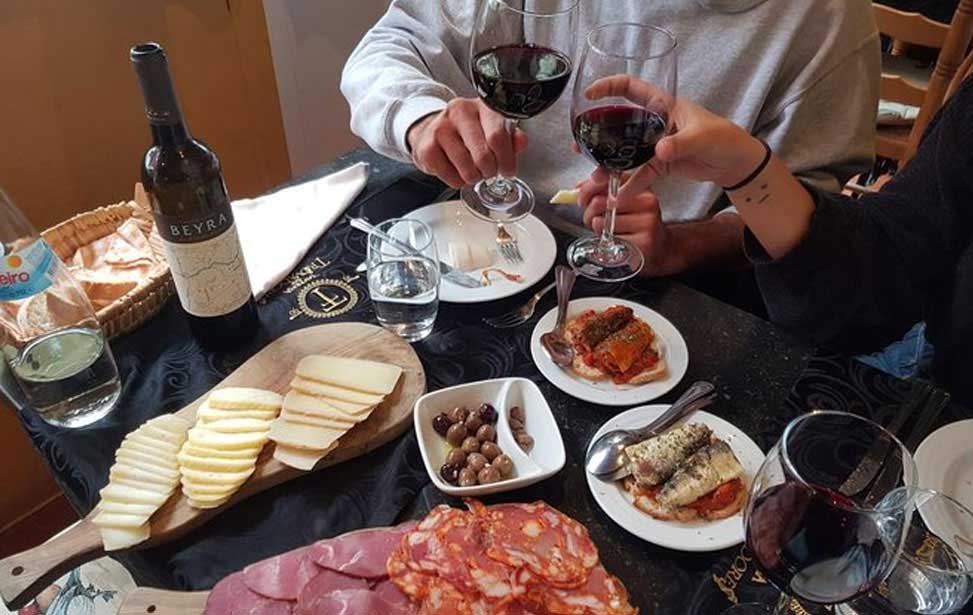
Considering Portugal is a country with approximately a thousand years of existence it’s certainly a country with very strong food culture. This gastronomical experience will take to your table, the best of these traditions from main courses to local pastries and finish with, Port Wine tasting. This experience gets even better as it will be guided by a local and expert guide, who will let you in all the history and traditions of Portuguese cuisine, as well as everything you need to know about Sintra! No need for you to worry about how to get to us, we will pick you up and drop you off at your accommodation – so just sit back and enjoy the best Portugal has to offer!
Check Availability
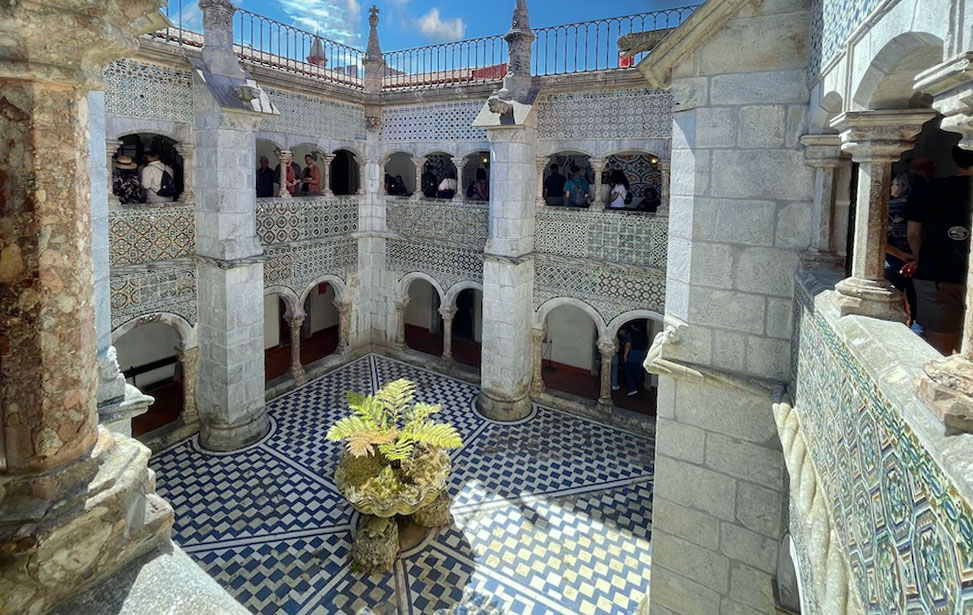
Pena Palace old cloisters
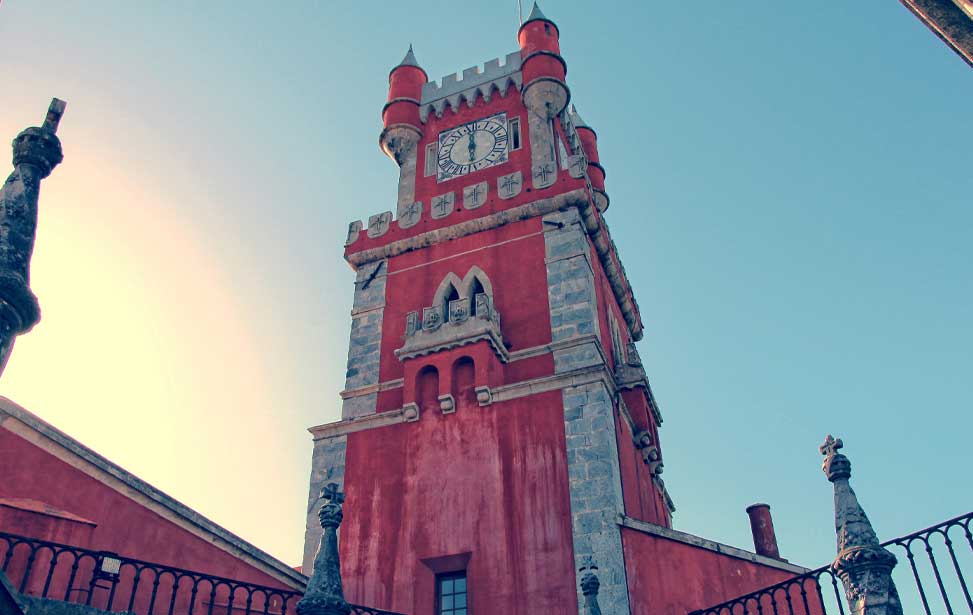
Clock tower
The creators of Pena Palace were committed to conserving the essence of the original Hieronymite monastery, ensuring the preservation of key features like the cloisters, dining room, sacristy, and the Manueline-Renaissance chapel. Beyond these components, a new addition in the form of the Queen's Terrace was meticulously crafted. Furthermore, an enhancement to the palace came in the form of a clock tower, incorporated in 1843.
The cloisters functioned as the central hub of the ancient monastery, featuring walls adorned with intricately designed azulejo tiles. While the cloisters were once brighter, the expansion process led to the bricking up of windows. These two-story cloisters, open to the sky, grant access to the Royal Family Dining Room and the Scullery. The lower floor houses the King's apartments, while the Queen's apartments are located on the upper floor. Explore the history and architectural richness of the cloisters at Pena Palace.
The dining room used by the King was originally the monastery refectory, which underwent modifications to serve private purposes. Highlighting a vaulted ceiling from the 16th century, characterised by ribbing in the Manueline style, the room boasts 19th-century tiles from the Roseira Factory embellishing its walls. The oak furniture within the dining room holds historical significance, commissioned in 1866 by King Fernando from Casa Gaspar in Lisbon. Explore the unique blend of architectural elements and historical artifacts in the King's dining room at Pena Palace.
Explore the historical significance and unique layout of King Carlos's private quarters at Pena Palace. King Carlos made use of the former Chapter House and adjoining rooms for his private apartments, offering a somewhat modest accommodation compared to the Queen's quarters on the upper floor. Within the King's apartments, you'll find the private living spaces of his Chamberlain and valet, who were constantly by his side.
The initial chapel devoted to Our Lady of Pena has preserved its authenticity since the 16th century. With a small nave featuring a Gothic vaulted ceiling and walls adorned with the original 16th-century azulejo tiles, the chapel remains a testament to its historical roots. Linked directly from Queen Amélia's private chambers at the southern end of the east wing is the Queen's Terrace. This terrace not only offers breathtaking views, but also features a captivating sundial and solar quadrant inscribed with the months of the year and hours of the day. Adding to the charm, a small cannon fires at noon each day.
To access the New Palace, visitors originally ascended the Calabash Stairs (Escada das Cabaças) and passed through a doorway beneath the Triton Arch. These stairs lead to the lavish Reception Room, completed in 1854. Crafted by Italian scenographer Paolo Pizzi, the room incorporates Arabesque elements. The vaulted ceiling is adorned with plant motifs using perspective techniques, creating the illusion of a more expansive space. An exquisite neo-rococo chandelier, shaped like a Morning Glory vine and dating back to the mid-19th century, adds a touch of grandeur. Indian furniture was introduced to the room in 1940.
Originally planned as a Knights Room with medieval-style decor, the Stag Room was intended to feature suits of armor, weapons on the walls, and heraldic stained glass windows. While the central pillar shaped like a tree and antlers around it didn't survive, the large round table did. The room now showcases stags' heads on the walls instead of a domed ceiling. Another notable space, The Noble Hall, initially designed as an ambassador reception hall, underwent a transformation into a billiards room. The Kitchens, the largest room in the palace, served as the preparation area for meals during grand banquets held in the Stag Room. Adorning the walls are copper pots and pans, each marked with King Fernando's monogram. Although only one of the original stoves remains, their chimneys are still intact. Explore the unique history and diverse rooms within the New Palace at Pena.
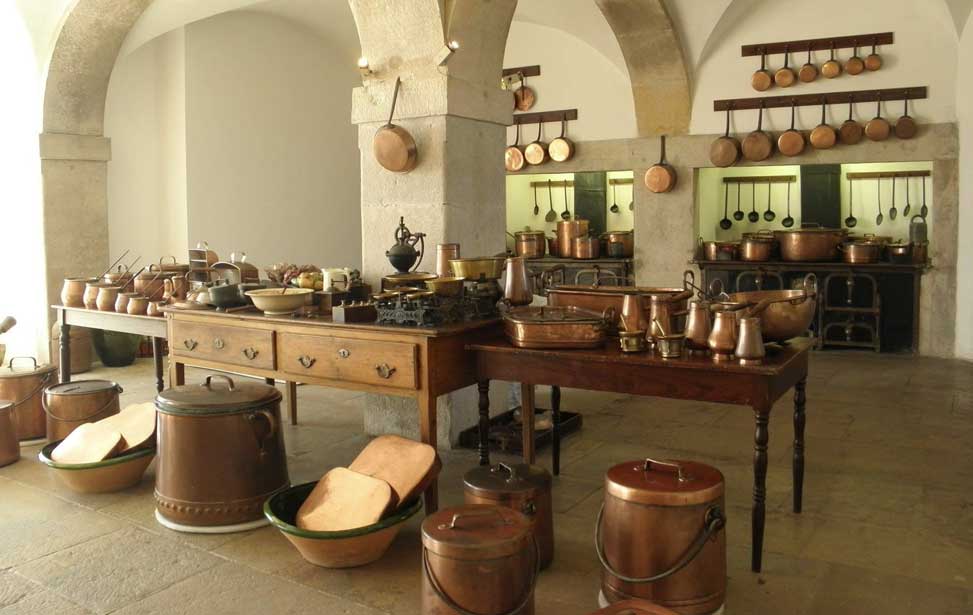
Pena Palace kitchens
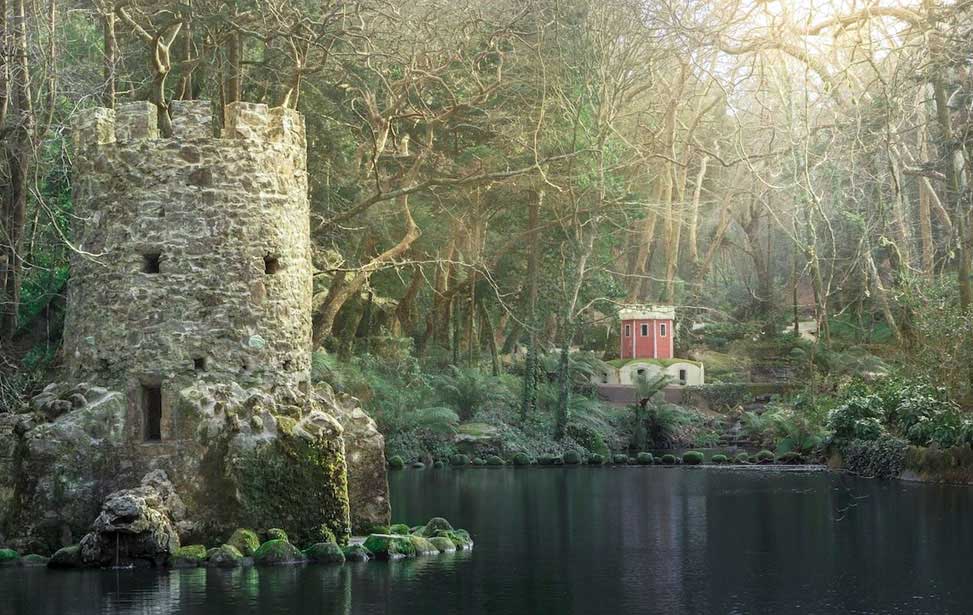
Valley of the Lakes
King Ferdinand envisioned an extraordinary castle, and to complement its fanciful grandeur, he crafted equally magical gardens. Influenced by the German Romanticism movement that inspired Pena Palace's construction, the garden design underwent a transformation, leveraging Sintra's tropical micro-climate and topology. Over 85 hectares of exotic trees and plants from around the world adorn winding paths, offering visitors a captivating experience. Divided into various gardens and landscaped areas, the park showcases pavilions, small decorative buildings, and water features, including waterfalls, ponds, lakes, and fountains. More than a century since King Ferdinand's vision materialized, visitors continue to be enchanted by the enduring magic of these gardens. Explore the allure of Pena Palace's gardens, where history, nature, and magic seamlessly converge. [ More About ► ]

|
There are cafeterias at the main entrance, gatekeepers house and in the Pena Palace, which also have a restaurant offering more substantial meals. | |
|
There are toilets in the cafés and various places around the park and palace. | |
|
The are some small car parks situated close to the main entrance to Pena Park and the Chalet of the Countess d'Edla but these will get full very quickly. Unless you have mobility issues it's advised to park in the old town and take the #434 bus from there. | |
|
You can book a private tour: info@parquesdesintra.pt | |
|
There's a hop-on hop-off transfer service available between with-in the Pena Park with five stops along the route including the Pena Palace and the Chalet of the Countess d'Edla. Sign language trained staff, manual wheelchairs available on reservation, traction equipment for wheelchairs, ramps are implemented difficult parts of the park and in certain rooms of the Palace and Chalet. Here too you can find adapted WCs. NOTE: The second floor of the Chalet of the Countess d'Edla is not accessible to persons with mobility restrictions. |
There are hiking trails signposted between the historic centre and the National Palace of Pena:
• Santa Maria Trail (Centre to Moorish Castle/Pena; 1770 metres, 1 hour)
• Lapa Trail (Centre to Pena; 1450 metres, 45 minutes)
• Seteais Trail (Centre to Seteais, Pena/Moorish Castle; 2410 metres, 1½ hours)
• Vila Sassetti Trail (Centre - Pena/Moorish Castle; 1850 metres, 45 minutes).
|
Take the IC19 from Lisbon, IC30 from Mafra or EN9 turning off the A5 motorway to Cascais. Once you have arrived in the town's historic centre it's best to leave the car and take the #434 bus to the Pena Park. | |
|
The Scotturb bus #434 leaves from Sintra Train station, stops in the Old Town centre next to the Tourist Office and takes you to the Pena Park. |
Contact Details
Estrada da Pena, Sintra 2710-609, Portugal.
38° 47' 16"N | 09° 23' 15"W | +351 219 237 300 |
info@parquesdesintra.pt | Website
